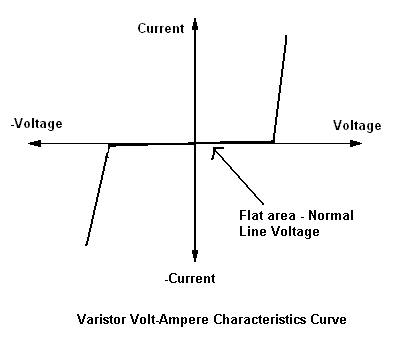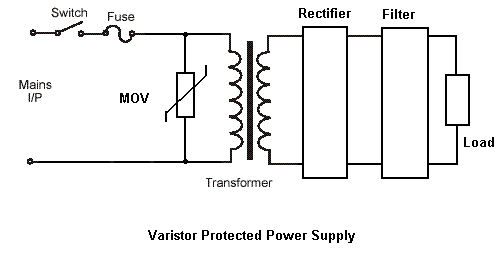Varistor As A Protective Device
Basics of Varistor
Line transients are becoming more common in the public utilities power supply system as more applications that caused harmonics, spikes and switching of inductive loads in machines and industrial equipment.
Lightning is another cause of line transients which can be damaging if care is not taken in advance to protect against electronic devices. There are many protective devices that can be implemented in a circuit ranging from MOV to gas discharge tube.
The most common type of varistor in the market these days is metal oxide varistor or MOV. It is a voltage dependent device that clamp a voltage to a certain level and absorbed the energy.
If the energy absorbed is within its specifications and ratings, it will not be damaged. In most instances, a large lightning strike will cause the var. to be damaged or melted.
It is make up of zinc oxide grains and each grain acts as a boundary with its neighbor to form a diode junction. When the line voltage is normal, it has very high resistance and draws little current from it until a transient comes.
When a surge of voltage come, the resistance will drop sharply and cause a high current to conduct, and hence the transient will be safely absorbed. This prevent the transient to strike the other components in the circuit and cause damage to the device.
In selecting the type of MOV to use, the response time it takes for the it to breakdown need to be considered. Other parameters are the maximum current and the breakdown voltage.
An example of the MOV application is that suppose the transient that comes to the device is 3000 V and the duration is 20us and a current of 100A flow in a MOV, then it has to be able to absorb a minimum energy of :
Energy = 3000V X 100A X 20 uS = 6 Joule.
Therefore the MOV must have at least a minimum of 6 Joule energy rating. The bigger the disc of the MOV, the higher energy it will be able to absorb the transient.
The Voltage-Ampere Characteristic Curve of a typical MOV is as shown below.

The typical application of a MOV in a power supply circuit is shown below. It is connected in parallel with the primary of a transformer. In normal situation, it draws almost zero current from the mains.
When a surge of voltage happens, its resistance drop and it absorbs the transient energy hence protecting the transformer, rectifier, filter and the load from the effect of the energy surges.



New! Comments
Have your say about what you just read! Leave us a comment in the box below.